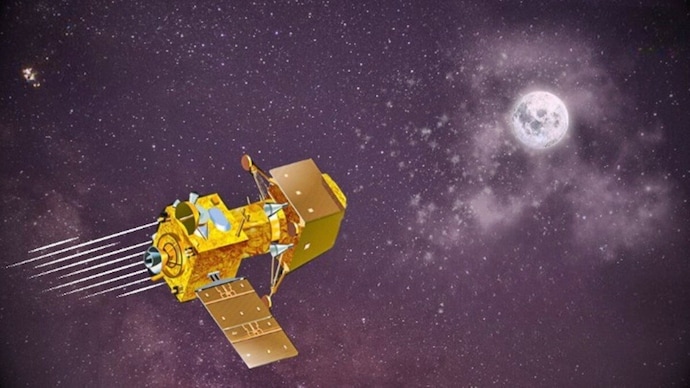
Chandrayaan-3 mission could be declared failed if...
If Chandrayaan-3 fails to be captured by the moon's gravity, the consequences could be significant. The spacecraft might either crash into the moon or be flung away from it due to the Earth's gravitational pull.

In Short
- The spacecraft would likely enter an elliptical orbit
- This elliptical path, known as an ellipse
- It would see the spacecraft oscillating between the closest point to Earth and the farthest point
By India Today Science Desk: The Indian Space Research Organisation (Isro) has said that the Chandrayaan-3 mission will enter into the Moon's sphere of influence on August 5 after leaving Earth earlier this week.
However, the success of this mission hinges on a critical phase - the lunar orbit insertion, a meticulously planned maneuver that reduces the speed of the spacecraft, allowing the moon's gravitational field to pull it into a stable lunar orbit.
If Chandrayaan-3 fails to be captured by the moon's gravity, the consequences could be significant. The spacecraft might either crash into the moon or be flung away from it due to the Earth's gravitational pull.
In the event of the latter, the spacecraft would likely enter an elliptical orbit around the Earth, as per the moon's natural orbit. This elliptical path, known as an ellipse, would see the spacecraft oscillating between the closest point to Earth (perigee) and the farthest point (apogee).
FOLLOW CHANDRAYAAN-3 MISSION LIVE
The return journey of Chandrayaan-3 towards Earth will be influenced by the gravitational forces of both celestial bodies. If the spacecraft orbits too close to the lunar surface, the moon's gravity might cause it to crash. Conversely, if the satellite is slightly too far from the moon, the Earth's gravity will pull the spacecraft out, flinging it away from the moon altogether.
Without the force of gravity from the Earth, the spacecraft would float away into space. However, a mix of velocity and distance from the Earth allows the spacecraft to always be in balance between fall and escape. This delicate equilibrium is what keeps the moon in its orbit around the Earth, and the same principles would apply to Chandrayaan-3 in its unplanned return journey.
In such a scenario, ISRO would likely attempt to regain control over the spacecraft and guide it back to Earth. Precise calculations and timing would be critical in this phase, as any miscalculations could result in the spacecraft being lost in space or crashing into the Earth or moon.
A former Isro official told India.Today.in that if that happens, the chances are that the mission will be declared lost, as there might not be enough fuel for it to be injected into the lunar orbit again. Another problem could be that by spending additional time in the radiation-filled vacuum of space, the instruments could begin to give up and show malfunctions.
What worries experts is that this has happened in the past with a Japanese spacecraft that was inserting itself in orbit around Venus.

When Japan's Akatsuki spacecraft initially attempted to enter Venus's orbit in December 2010, the maneuver was not successful, and the spacecraft failed to be captured by the planet's orbit as planned. This occurred due to a malfunction in the spacecraft's main engine during the orbit insertion burn.
As a result of this failure, Akatsuki missed its chance to enter a stable orbit around Venus during its first attempt. After analyzing the situation and making necessary adjustments, JAXA successfully executed a second attempt in December 2015. During this attempt, the spacecraft's engines fired correctly, and Akatsuki was successfully inserted into an elliptical orbit around Venus.

